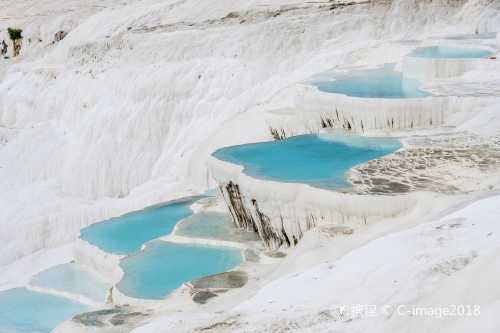Popular Trip Moments
Greece and Turkey Travel Guide | Pamukkale: The Snow-White Staircase Left by the Gods, Perfect for Wedding Photos | Soak your feet in the limestone hot springs of Pamukkale, Turkey | A Dreamland Gifted by Nature | Pamukkale, Turkey | A vacation to Turkey | Türkiye is back but doesn’t want to go again | Pamukkale: Nature's Cotton Castle | Turkey's Pamukkale: Soak in hot springs at the "Sky City" and explore an ancient theater. | Türkiye - Pamukkale (Pamukkale), a rare snow-white castle~ | Hierapolis | Cotton-like [Pamukkale] | 🏛 Hierapolis & Amphitheater, where the breath of ancient Rome lives on | Pamukkale: Turkey's Natural Wonderland! | Peeking into the ancient city of Hierapolis in Turkey | An outdoor archaeological museum that will surprise you😱 | Türkiye! The ultimate romantic trip is born here❤️ | A Fairyland in the Clouds! The Breathtaking Beauty of Pamukkale, Türkiye | Pam Thermal Hotel & Spa: The Top Choice for a Pamukkale Hot Spring Resort | 🇹🇷World Heritage Site Pamukkale – A spectacular spot with natural white hot spring terraces and ancient ruins 🏺✨ | I want to take you to the romantic [Türkiye] | Denizli, Türkiye | Check in the wonders of the ancient city of Pamukkale | Take a short holiday to Türkiye and enjoy a dream trip | From Pamukkale to Denizli and the Ephesus Museum | Don’t just miss the Turkish hot air balloons Pamukkale is the real wonderland | Denizli's Pamukkale: A White Wonderland of Hot Springs, Travertines, and Ancient Roman Ruins! | Go to Denizli and experience the romance of Türkiye | Underrated Turkish Treasures | A Complete Guide to Denizli | Türkiye | 10-day Qingming Festival Tour - A Complete Guide | Go to Türkiye for 8 days during Qingming Festival. Just read this article. | 9-Day Türkiye Adventure: Your Ultimate Guide
Recommended Attractions at Popular Destinations
Bangkok attraction near me | Manila attraction near me | Tokyo attraction near me | Taipei attraction near me | Hong Kong attraction near me | Seoul attraction near me | Kuala Lumpur attraction near me | Los Angeles attraction near me | Shanghai attraction near me | New York attraction near me | Shenzhen attraction near me | Osaka attraction near me | Singapore attraction near me | London attraction near me | Guangzhou attraction near me | San Francisco attraction near me | Beijing attraction near me | Macau attraction near me | Bali attraction near me | Jakarta attraction near me | Paris attraction near me | Ho Chi Minh City attraction near me | Istanbul attraction near me | Phuket attraction near me | Chicago attraction near me | Seattle attraction near me | Toronto attraction near me | Orlando attraction near me | Cebu attraction near me | Chiang Mai attraction near me
Popular Attractions
Grand Tang Mall | Oriental Pearl Radio & Television Tower | Shanghai Zoo | Marine Drive | Longjing tea fields | Universal Studios Singapore | Niu Shou Shan | Mount Li | Furong Cave | Luoxing Island | Tang Paradise | Jinli Street | Chinatown | Chongqing Two Rivers Night Cruise | Tribe of the Three Gorges | New England Aquarium | Swakopmund Museum | Yoshino Park | Planet Golf at the Biltmore | Evangelismos Park | tc* the harmony | Lew Lane Field at Bishop Stadium | Parkea | Gangnath mahadev temple | Gallery Underground | Brunswick Sports Complex | Ba Na Hills | Qing’e Ferry Crossing | Shanghai Old Street
Popular Restaurants in Pamukkale
Asian Kitchen & Coffee | Kayas Restaurant and Bar | Lamuko's Lokanta | Traverten Pide | Cadde Grill House | White House Restaurant & Bar | Teras restaurant | Mehmet's Heaven | Kale Rastaurant | ZHONG RI XI FU CAN TING | Melrose Viewpoint Restaurant | Ugur Pide | Denizli Kebap Salonu | Alida Restaurant | Saracoglu Kasri | Meshur Denizli Kebapcisi | Dogapark | Tıkır Grill Hause | Etler Et Mangal | Traverten Manzara Restaurant | Selale Restaurant | Pizza House | Seyir Restaurant | Camlik Kokorec | Ozyurt Pide ve Doner Salonu | Serin Lokantasi | Odun Atesi | Rose Resturant | Pizza Pizza | Pamukkale Restaurant
Popular Ranked Lists
Top 19 Local Restaurants in Huai'an | Popular Premium Hotels in Sanliurfa Province | Top 5 Best Things to Do in Huaihua | Popular Best Things to Do in Nujiang | Top 3 Premium Hotels in Portalegre District | Popular Best Things to Do in Huainan | Popular Best Things to Do in Longyou | Top 10 Local Restaurants in Tel Aviv | Popular Premium Hotels in Kastamonu Province | Top 10 Local Restaurants in Malay | Top 7 Best Things to Do in Jining | Top 17 Local Restaurants in Yokohama | Top 3 Premium Hotels in Nakuru | Top 3 Premium Hotels in Erzurum Province | Top 11 Premium Hotels in Kosovo | Popular Best Things to Do in Xing'an County | Top 4 Premium Hotels in Aveiro District | Top 5 Premium Hotels in Gaziantep Province | Top 3 Luxury Hotels in Shima | Top 4 Best Things to Do in Nanping | Popular Best Things to Do in Nanchong | Top 4 Premium Hotels in Paro | Popular Best Things to Do in Qinzhou | Top 4 Best Things to Do in Guigang | Popular Best Things to Do in Danba | Top 3 Premium Hotels in Diyarbakir Province | Top 18 Local Restaurants in Dunhuang | Top 10 Local Restaurants in Nice | Popular Best Things to Do in Baiyin | Popular Best Things to Do in Jiaozuo
Payment Methods
Our Partners
Copyright © 2025 Trip.com Travel Singapore Pte. Ltd. All rights reserved
Site Operator: Trip.com Travel Singapore Pte. Ltd.
Site Operator: Trip.com Travel Singapore Pte. Ltd.








































